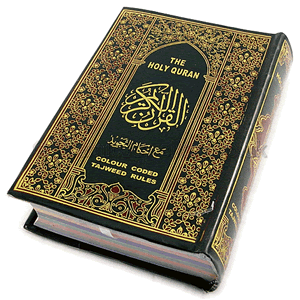FOUR BOOKS OF ALLAH (God)
- TAWRAT

Tawrat : This is the revelation that Allah sent to Musa (Moses), peace be upon him.

Zabur : This is the revelation that Allah sent to Daud (David), peace be upon him.
- Injeel
Injeel : This is the revelation that Allah sent to Eesa (Jesus), peace be upon him.
- QURAN
Quran : This is the revelation that Allah sent to Muhammad, peace be upon him.
There is nothing worthy of worship except Allah.
The Tawrat:
The Tawrat is usually referred to as the “Law” in the Quran. Specifically, the Law of Moses. Many people equate the Tawrat with the Torah of the Jewish faith, or the Old Testament of the Christian faith.
In some ways this is true, as the Torah does contain some of the truths revealed to Prophet Musa (Moses, peace be upon him). However, it is not completely accurate because the Torah consists of much more than just the law revealed to Moses.
No one really knows the full history of the Torah, and there are several different versions of it. For instance, the Catholic Old Testament is different from the Protestant Old Testament.
And scholars have long since concluded the Torah was not written by one person, and certainly not by Moses directly (or indirectly).
The Tawrat that Muslims accept as the true commands of Allah is that which was directly revealed to Moses. While that message is still alive today in the message of the Quran, the actual text has been lost.
The Zabur:
The Zabur is the book of Allah that was revealed to Daud (David, peace be upon him). It means “songs” in Arabic, as this revelation came to David in the form of a series of songs or chants.
But like the Tawrat, the original text is no longer with us. The modern Psalms that are present in the Bible today are not the same songs revealed to David. Many scholars believe that the Psalms of today were written by several authors from different times.
The psalms of today are important to both the Jewish and Christian faiths. However, they have very little relevance in Islamic life.
Since Prophet Daud (David, peace be upon him) preached Tawheed (monotheism), his original message is still preserved in the Quran.
The Injeel "Bibel"
The Injeel is the book of Allah revealed to Prophet Eesa (Jesus, peace be upon him). Injeel means evangelion, or Gospel Book. It is often just translated as The Gospel.
Like the Tawrat, many people make the mistake of stating the Injeel is the New Testament of the Bible. But that is far from the truth.
The New Testament consists of written work attributed to some of Jesus’ disciples. And a good portion of the New Testament was written by Paul, who was not a disciple at all.
Most modern scholars have concluded it is highly unlikely that Jesus’ actual disciples wrote any part of the New Testament. Even if they had written it (which they did not) They were not the prophets of Allah.
While there may be some truth in the writings popularly known as the Gospels of Mark, Luke, John, and Matt, Muslims are not obliged to follow or even read them.
The only Gospel we are concerned with, is the Gospel of Jesus. But like many other Books of Allah, the actual text is no longer available.
And like all of the other Books of Allah, the message of the Injeel is preserved in the message of the Quran.
The Quran:
The Quran is the final Book of Allah. It was revealed through Prophet Muhammad (peace be upon him). It’s primary message is the message of Tawheed, or Islamic monotheism.
The Quran is the only one of Allah’s books that is still available in the original text. Allah has promised in the Quran that His message will be preserved forever, and 1400 years later, that is still true.
The preservation of the Quran was done in a magnificent and foolproof manner. Since the time of Prophet Muhammad, Muslims have made it a practice to memorize all or parts of the Quran. During the time of Prophet Muhammad, there were several Muslims that memorized the Quran in its entirety.
The Quran was put in full written form just a few years after Prophet Muhammad died. Not centuries later like the Bible. If anyone had made a mistake, then there were hundreds of others to correct them.
The tradition of memorizing the Quran still holds true. You can visit any Muslim country (and many non-Muslim ones also) and meet any number of Hafeez ul-Quran (Keepers of the Quran). These are people who have memorized the entire Quran.
The Quran that we use today, is exactly the same as the one used over a thousand years ago. And since the Quran is in Arabic, we always have one, standardized version.
Even if every single Quran in print today were destroyed, and every computer disk holding the Quran were destroyed, and every audio tape, CD, DVD, or film with the Quran were destroyed, it could be reproduced in a matter of hours.
The Quran is the final Book of Allah, and its core message envelopes the message of all of Allah’s Books.


